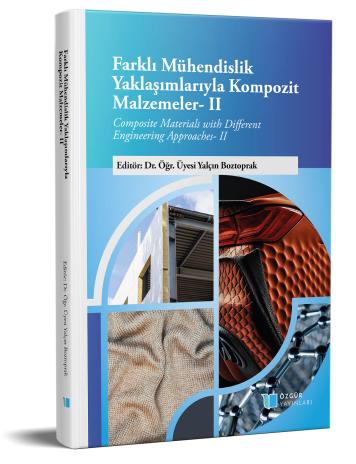
Seramik Esaslı Kompozitlerin Flaş Sinterleme Tekniğiyle Üretimi
Şu kitabın bölümü:
Boztoprak,
Y.
(ed.)
2023.
Farklı Mühendislik Yaklaşımlarıyla Kompozit Malzemeler-II.
Özet
Bir kompozit malzeme, bir matris içinde dolgu maddeleri ve güçlendiricilerin, kullanım alanına uygun özelliklerce belirlenmiş bir düzen içerisinde dağılımından oluşur. Genel olarak birbirlerinden fiziksel ve/veya kimyasal özellikler bakımından farklılık gösteren iki veya daha fazla fazdan üretilirler ve bu nedenle seçilen üretim yönteminin ana matris malzemenin yanı sıra içerdiği diğer faz gruplarına uygunluğuna da dikkat edilmelidir. Sinterleme temel olarak, toz halindeki malzemelerin ısı altında yoğunlaştırılması olayıdır. Sinterleme esnasında farklı difüzyon mekanizmaları bulunmaktadır. Salt ısıya dayalı teknikler, birçok malzeme grubu için nispeten yüksek sıcaklık ve uzun süreler gerektirdiğinden malzemede tane büyümesine yol açar ve dolayısı ile fiziksel özelliklerine zarar verir. Bu motivasyonla, basınç ve elektrik alan destekli sinterleme teknikleri de yoğun olarak araştırılmaktadır. Flaş sinterleme bir elektrik alan destekli sinterleme yöntemidir. Bu teknikte elektrik alan doğrudan malzemeye uygulanmaktadır ve sinterleme sıcaklığı ve süresinde dikkate değer düşüşler gözlenir. Birçok farklı sistemde denenmiş olmasına rağmen kompozit malzemelerde kullanımı esas olarak düşük elektrik iletkenliğine sahip malzemelere iletkenliği arttırıcı katkıların eklenmesi ile başlamıştır ve sonrasında çalışmalar yaygınlaşmıştır. Bu bölümde öncelikle flaş sinterleme açıklanmış ve sonrasında literatürde bulunan kompozit malzemelerin flaş sinterleme ile üretimi çalışmaları derlenmiştir. Bu bölümün özellikle kompozit malzemelerin yoğunlaştırılması üzerine çalışmalar yapan ve elektrik alan destekli sinterlemeye ilgi duyan araştırmacılar için önemli bir kaynak olacağı düşünülmektedir.

